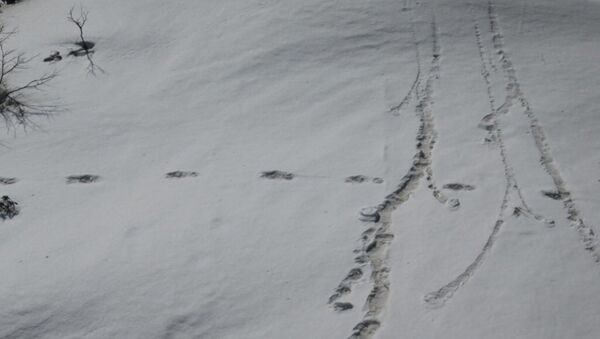Nepalese officials have dismissed the claims of the Indian Army that the latter discovered Yeti footprints on April 29. According to the Nepal Army liaison officer and local porters who accompanied the mountaineering expedition of the Indian Army, such footprints frequently appear in the region and belong to a wild bear.
"A team of Indian Army had noticed the footprints and our liaison team was together with them… We tried to ascertain the fact, but locals and porters claimed that it is the footprints of wild bear that frequently appear in that area," Nepal Army spokesperson Brigadier General Bigyan Dev Pandey told Hindustan Times.
The Indian Army published on Monday a Tweet with three pictures depicting the footprints of the alleged Yeti.
For the first time, an #IndianArmy Moutaineering Expedition Team has sited Mysterious Footprints of mythical beast 'Yeti' measuring 32x15 inches close to Makalu Base Camp on 09 April 2019. This elusive snowman has only been sighted at Makalu-Barun National Park in the past. pic.twitter.com/AMD4MYIgV7
— ADG PI — INDIAN ARMY (@adgpi) 29 апреля 2019 г.
The Yeti, also called the Abominable Snowman, is an ape-like animal that is said to inhabit remote mountainous territories in various parts of the world. While most scientists believe that the Yeti is no more than a myth and part of popular culture, others say that it could be an ancient hominid that has not yet been discovered.
Curiously, the 160,000-year-old jawbone of an actual ancient hominid, a Denisovan, was discovered recently for the first time outside Siberia, on a Tibetan plateau.


